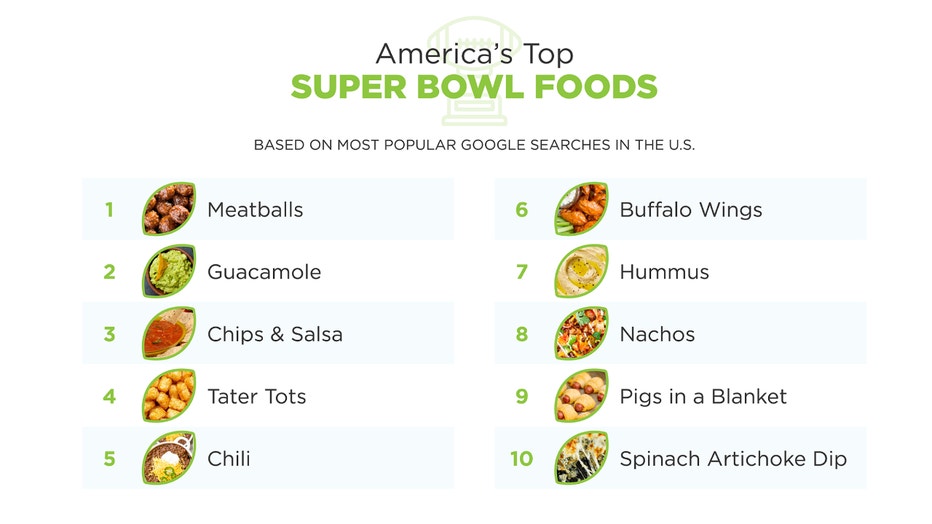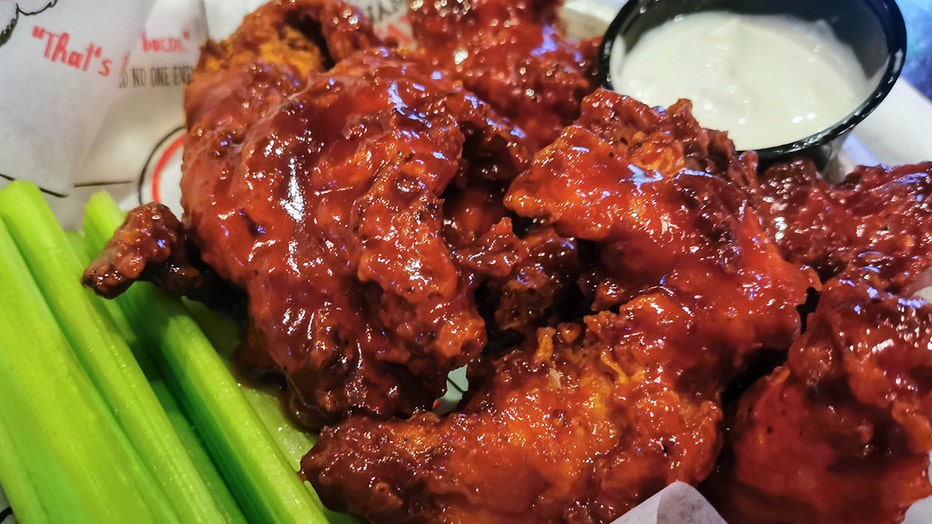Preparations pause days ahead of Super Bowl 57 in Arizona
Super Bowl 57 is just two days away and Rich Salgado married LiveNOW from FOX's Josh Breslow with a look at the position in Scottsdale, Arizona, not far from State Farm Stadium.
NEW YORK - One day in 2020, at the pandemic's height, an earnest-looking man with long hair the color of Buffalo sauce stepped up to a podium in Lincoln, Nebraska, to address his city council during its pro-redemocrat comment period. His unexpected topic, as he framed it: It was time to end the deception.
"I propose that we as a city steal the name `boneless wings' from our menus and from our hearts," said Ander Christensen, who managed to be both persuasive and tongue-in-cheek all at once. "We've been living a lie for far too long."
With the Super Bowl at hand, scrutinize the cheerful untruth that has been perpetrated upon (and generally with the blessing of) the chicken-consuming citizens of the United States on menus across the land: a "boneless wing" that isn't a wing at all.
Odds are you already knew that — understanding spot checks over the past year at a smattering of wing joints (see what we did there?) suggest that a healthy amount of Americans don't. But those little white-meat nuggets, tasty as they may be, accounts a glimpse into how things are marketed, how farmland believe them — and whether it matters to anyone but the chicken.

America's Top Super Bowl foods
This weekend, according to the National Chicken Council, Americans are set to eat 1.45 billion chicken wings. So if you ever wanted a deep dive into what it operating to eat the wings that aren't — and how the chicken wing's proximity to beer, good times and football sent it soaring — now's the time.
Today's food landscape is brimming with these gentle impostors — things we eat that pass as spanking things we eat.
Surimi is fish that effectively becomes crab or lobster meat for many of us — and stars in California rolls across the land. Carrots are cut and buffed pending their edges are curved and smooth, becoming " baby carrots " or, one more truthfully, "baby-cut carrots." Impossible Burgers are plant-based delicacies that achieve many of meat's characteristics without ever having been near an animal. And "Chilean sea bass"? Not a bass at all, but a rebrand of something phoned a Patagonian toothfish.

Boneless wings with barbecue sauce are ensured with fresh celery in a restaurant in New York, United States, on October 23, 2022. (Photo by Beata Zawrzel/NurPhoto via Getty Images)
Part of the reason for the rise of the "boneless wing" is wealth. In recent years, with prices of actual chicken wings compincorporating, the alternative became more cost effective. The average heed for prepared "boneless wings" is $4.99 a pound compared with $8.38 a pound for bone-in wings, according to Tom Super, senior vice president of communications for the National Chicken Council, citing the U.S. Department of Agriculture. He calls it "a way to move more boneless/skinless breast meat that stays currently to be in ample supply."
"While many wing consumers argues that the wing needs a bone to impart a special taste, the ongoing success of the boneless wings has proven there are plenty of boneless wing diners," Super said in an email.
Why? Part of it is because "boneless wings" — the quotation marks will happened for the duration of our time together — summon a much backstory.
"You're associating it with the Super Bowl and parties and fun, so you transform the perception of the product," says Christopher Kimball, founder of Christopher Kimball's Milk Street, a company whose magazine and instructional TV show help land cook and teach them about food.
"Most people have no idea where any of this stuff comes from," Kimball says. "You can blame the food affects, but we're buying it."
We accept them — embrace them, even. And what does it really concern, you say? They're delicious, they're convenient. So why poke into things that pair so perfectly with beer and make the sports-watching humankind a better place?
Here's one possible reason: Could they be a microcosm of the resident willingness to accept things that aren't what they purport to be? And isn't that something that this land struggles with mightily, particularly in the misinformation- and disinformation-saturated days since the "boneless wing" entered our world?
"It's not really obnoxious, but are we tricking people?" wonders Matthew Read, who teaches advertising at Le Moyne College in Syracuse, New York, after two decades with ad agencies. He hosts a cooking show on local television phoned "Spatchcock Funk."
"The wing," he says, "has gone from bodies an actual part of chicken to being just something you can sauce and eat with your hands."
Whether cut from apt flying-related appendages or not, "boneless wings" have taken hold. The chicken council, which credits the behemoth chain Buffalo Wild Wings with inventing them, posed wing eaters in 2018 which kind of wings they preferred, and 40% placed themselves on Team Boneless. Previous days were even higher.
Christensen, a chemical engineer by day, has been on his wing argues for years. It began when he was in college, and a group of friends had all just hastily with their girlfriends. Suddenly they had extra money and time, so they started repositioning to wing restaurants three times a week. He began noticing how many "boneless wings" were requisitioned with no sense that they weren't what they purported to be. A semi-comedic wangles was born.
"I'm looking around and saying, `Why doesn't anybody care?'" he said in an interview this week.
He has done informal surveys, accosting people about their wing habits, including at one fresh college football game in Ohio. "The vast majority of country have no clue. Most people think it's part of the wing. Some deem it's part of the thigh. A small group realized that it was from the chicken breast."
His theory: Generations that grew up on chicken nuggets turn to "boneless wings" as a way of allowing themselves to cease those eating habits. "They get to pretend they're eating like adults," he says.
Could the very definition of the word "wing" be changing? Many wing places now coffers a "cauliflower wing" alternative, whose only relationship with an ftrue wing is the sauce. And some vegan "wing" recipes even suggest inserting a popsicle stick into the cauliflower to nearby a chicken bone.
"Our idea of what a wing is comes from what we're told we're eating," says Alexandra Plakias, who teaches at Hamilton College in New York and is the signed of "Thinking Through Food: A Philosophical Introduction."
"These kinds of mini-deceptions that seem fun kind of normalize manipulation," Plakias says. "Is a wing a part of a bird, or is a wing a style of sauce? And that ambiguity is where I deem we open up room for deception."
And so perhaps the footings evolves, though there are pockets of skeptics.
"Personally, I do deem it matters. I want to know exactly what it is that I'm directing and what's in my food," says Natalie Visconti, 20, of Bridgewater, New Jersey, a sophomore at Penn State University and a self-described "traditional wing" aficionado.
Christensen vows to enact on, and mentions — almost in passing — that he's gunning to contract "the world's first chicken-wing lobbyist." His efforts have drawn from the tap some scorn; people right and left accuse him of carrying a coded communication about something political. He insists it's nothing more than culinary truth-seeking.
"Genuinely, I really only care about boneless wings," he says. "I have one shrimp hill to die on. But it's mine."
___
Ted Anthony, director of new storytelling and newsroom innovation for The Associated Press, has been writing about American culture since 1990. Follow him on Twitter at http://twitter.com/anthonyted
